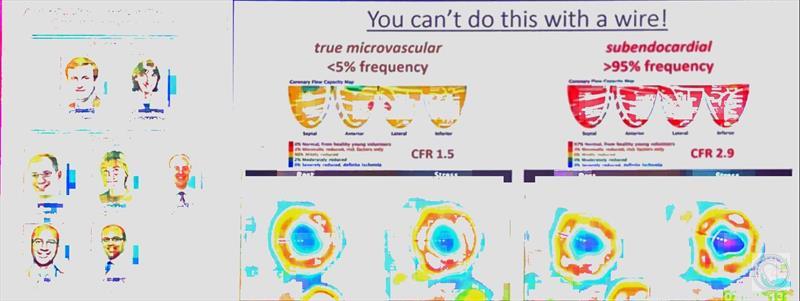- Trang chủ
- Tin tức
REVISED TRIAL 2022

REVIVED Fails to Show Benefits of Percutaneous Coronary Intervention Over Medical Therapy in Heart Failure With Left Ventricular Dysfunction
Represented again at TCT2022 by Dr Perera
Event and mortality rates continue to be high in patients with ischemic cardiomyopathy
- PracticeUpdate
Percutaneous coronary intervention (PCI) failed to reduce the risk of death or hospitalization more than optimal medical therapy among patients with heart failure and left ventricular dysfunction, according to research presented at the 53rd Annual European Society of Cardiology Congress, which took place here and online from August 26 to 29.
“Ischemic cardiomyopathy is the commonest cause of left ventricular dysfunction,” lead author Divaka Perera, MD, of Guy's & St Thomas' NHS Foundation Trust in the United Kingdom, said during his presentation of the data. “From the time we realized this, it was thought that treating the coronary artery disease (CAD) would be a good way of reversing the left ventricular dysfunction and improving outcomes.” The STITCH trial revealed that coronary artery bypass grafting improves long-term outcomes, compared with optimal medical therapy. Until now, however, there has been no evidence from randomized trials that PCI offers similar benefits.
Thus, Dr. Perera and colleagues conducted the REVIVED trial, for which 700 patients with severe left ventricular dysfunction recruited from 40 centers in the United Kingdom were randomized to treatment with PCI (n = 347) or optimal medical therapy, which included both pharmacotherapy and device therapy (n = 353). Patients underwent echocardiography at 6 and 12 months. They also underwent clinical, implantable cardioverter-defibrillator (ICD), and biochemical follow-up at 6, 12, and 24 months.
All patients had a left ventricular ejection fraction (LVEF) ≤ 35%, extensive CAD (defined as a British Cardiovascular Intervention Society Myocardial jeopardy score ≥ 6), and viability in ≥ 4 myocardial segments that could be revascularized by PCI. Exclusion criteria were acute myocardial infarction (MI) within the previous 4 weeks and acute decompensated heart failure or sustained ventricular arrhythmias.
The primary endpoint of the trial was all-cause death or hospitalization for heart failure at a minimum of 24 months. Major secondary outcomes included LVEF at 6 and 12 months by blinded core laboratory analysis, quality of life outcomes at 6, 12, and 24 months measured using the Kansas City Cardiomyopathy Questionnaire (KCCQ) and EQ-5D-5L Index, and New York Heart Association (NYHA) class.
The two groups were well-matched in terms of demographic characteristics. Patients’ average age was about 70, and 88% were male. The average LVEF was 27%, the median jeopardy score was 10, and 14% of patients had left main CAD. One-third of patients had been admitted to hospital for heart failure in the 2 years prior to randomization, but all were on good medical therapy at the time of randomization. More than 70% of patients were NYHA class I or II. Nearly one-quarter received a heart failure device, usually an ICD or a cardiac resynchronization therapy device.
After a median of 3.8 years, 38.0% of patients in the medical therapy group reached the primary outcome, compared with 37.2% in the PCI group. Outcome rates were virtually identical between the two groups throughout the entire follow-up period. The two groups were also similar when the individual components of the primary outcome were examined separately. These findings were consistent across multiple prespecified subgroups.
There was a slight improvement in LVEF during the study period, but this occurred similarly in both groups. Quality of life, as measured by the KCCQ and EQ-5D-5L, was greater in the PCI group early on, but the medical therapy arm caught up with the PCI group by 24 months. Both groups had similar reductions in NT-proBNP over time. Rates of acute MI were similar in the two groups, but rates of unplanned revascularization were lower in the PCI group than the medical therapy group, with a hazard ratio of 0.27 (95% confidence interval 0.13–0.53).
“Patients with ischemic cardiomyopathy continue to have very high event rate mortality and hospitalization, even with the best medical and device therapy we could give them during this trial,” concluded Dr. Perera. “PCI did not reduce the composite incidence of all-cause death or hospitalization for heart failure, and it did not improve LVEF or provide a sustained difference in quality of life.”
Dr NGO
TCT2022 summary
